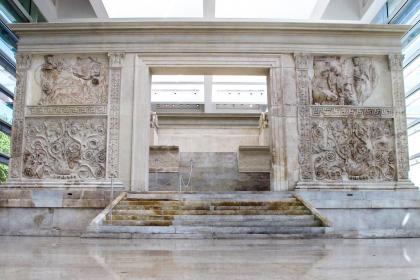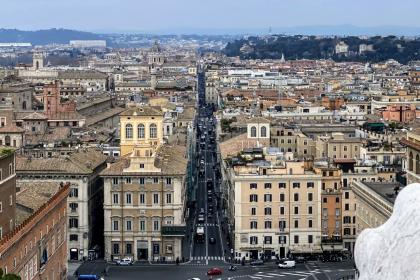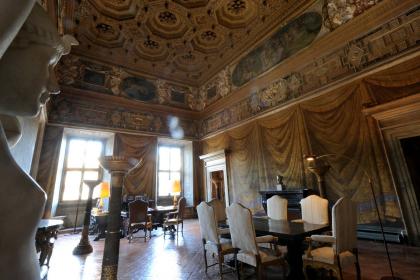Located between Via del Corso and Via della Scrofa, the 16th-century Palazzo Firenze is a historic Roman residence that belonged, among others, to the Medici, a famous Florentine family from which it derives its name.
In 1516, Jacopo Cardelli (1473-1530), secretary to Pope Leo X, purchased a large plot of land in the Rione Campo Marzio to build a mansion to accommodate his large family, which numbered as many as ten natural children. Upon his death, and until 1547, the palace was the residence of Cardinal Ridolfo Pio da Carpi.
As the Jubilee of 1550 approached, Pope Paul III Farnese (1468-1549) initiated a massive plan to renovate the rione, a project taken up by his successor Julius III del Monte. In his plans was the opening of the Via Trinitatis - corresponding to today's Via dei Condotti and Via della Fontanella di Borghese - to connect the Pincio area to the port of Ripetta. The pope purchased several palaces in the rione to transform them into one sumptuous residence to rival the magnificent one built for his predecessor. Among the buildings was Palazzo Firenze, which underwent significant renovations carried out by Florentine architect Bartolomeo Ammannati. Thanks to its work, the palace took on its present appearance with the loggia facing the garden. The facade has two floors on each of which five windows open. On the second floor, windows crowned by triangular tympanums alternate with those surmounted by curvilinear tympanums. Festoons decorate those on the second floor. A balcony with a railing supported by two decorated corbels surmounts the majestic arched portal.
Between 1553 and 1555, Prospero Fontana decorated the ground-floor loggia, known as the Loggia del Primaticcio, traditionally the work of Primaticcio, and the original Pompeian red room, also on the first floor, known as the Camerino dei Continenti, from the central panel depicting three of the four parts of the world, namely Asia, Africa, and Europe. Finally, as part of the same decorative campaign, the magnificent carved ceilings of the loggia on the piano nobile, now known as the la Sala del Granduca, were created. For a long time, the decoration with mythological-allegorical themes of the Sala delle Stagioni and the Sala degli Elementi, conducted between 1574 and 1575, was also mistakenly attributed to Prospero Fontana himself, as well as to Primaticcio. They are instead the work of Jacopo Zucchi, a pupil of Giorgio Vasari.
In 1561, Palazzo Firenze became the Roman residence of Cosimo I de' Medici, Grand Duke of Tuscany. The building, since then known as Palazzo Firenze, was renovated by Baldovino del Monte, perhaps on a design by Vignola, who created the harmonious arcade of the courtyard.
Between the late 16th and early 17th centuries, the splendid palace became a landmark for the Roman elite, often hosted to sumptuous parties and grand banquets offered by Cardinal Ferdinando I de' Medici.
In 1587, the palace, by then abandoned by the Medici, who preferred residences more suited to their ranks, such as Palazzo Madama and Villa Medici, became the seat of the Florentine ambassador to Rome.
In 1872, Palazzo Firenze became the residence of the Ministro di Grazia e Giustizia and later the seat of the Avvocatura di Stato.
Since 1926, it has been home to the Società Dante Alighieri. Founded in 1889 by a group of intellectuals led by Giosue Carducci, it aims to "protect and spread the Italian language and culture throughout the world, reviving the spiritual ties of compatriots abroad with the mother country and nurturing among foreigners the love and cult for Italian civilization."
Rione IV - Campo Marzio

Via del Corso

 Condividi
Condividi
Palais Farnèse

 Condividi
Condividi
Informations
The visit to the Palace requires reservations by writing an email to: c.barbato@dante.global
 Condividi
Condividi
Location
Pour connaître tous les services d'accessibilité, visitez la section Rome accessible.











































